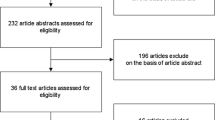ABSTRACT
Integrating mobile technology into health promotion strategies has the potential to support healthy behaviors. A new theory-informed app was designed to augment an intervention promoting wellness motivation in older adults with fall risk and low levels of physical activity. The app content was evaluated for clarity, homogeneity, and validity of motivational messages; both the app and device were evaluated for acceptability and usability. The initial evaluation included nine adults (mean age, 75); four of whom also assessed the app’s sensing abilities in the field. As part of an intervention feasibility study, 14 older adults (mean age, 84) also provided a follow-up evaluation of app usability. Evaluation participants assessed the app as valid, usable, acceptable, and able to sense most reported free-living activities, and provided feedback for improving the app. Design processes illustrate methodologic and interpretive efforts to operationalize motivational content in a theory-informed app promoting change in physical activity behavior.


Similar content being viewed by others
References
Center for Disease Control and Prevention. National Center for Health Statistics. Health Indicators Warehouse. www.healthindicators.gov. Accessed 19 Mar 2013.
Centers for Disease Control and Prevention (2011) Web-Based Injury Statistics Query and Reporting System (WISQARS). National Center for Injury Prevention and Control, Centers for Disease Control and Prevention. www.cdc.gov/ncipc/wisqars. Accessed 15 April 2013.
Stevens JA, Mack KA, Paulozzi LJ, Ballesteros MF. Self-reported falls and fall-related injuries among persons aged ≥65 years—United States, 2006. J Saf Res. 2008; 39(3):345-349.
Gillespie LD, Robertson MC, Gillespie WJ, et al. (2012) Interventions for preventing falls in older people living in the community. Cochrane Database Syst Rev. doi:10.1002/14651858.CD007146.pub3.
McMahon S, Fleury J. External validity of physical activity interventions for community-dwelling older adults with fall risk: a quantitative systematic literature review. J Adv Nurs. 2012 Oct; 68(10):2140-2154.
Fleury J. Wellness motivation theory: an exploration of theoretical relevance. Nurs Res. 1996; 45(5):277-283.
Fogg B. Persuasive technology: using computers to change what we think and do. San Francisco, CA: Kaufmann; 2003.
Zickuhr K (2011) Generations and their gadgets. Pew Internet & American Life Project.
Alicea-Planas J, Neafsey PJ, Anderson E. A qualitative study of older adults and computer use for health education: “it opens people’s eyes”. J Comm Healthc. 2011;4(1):38-45.
Consolvo S, McDonald DW, Landay JA (2009) Theory-driven design strategies for technologies that support behavior change in everyday life. CHI ’09 Proceedings of the SIGCHI Conference on Human Factors in Computing Systems, pp 405–414.
Albaina IM, Visser T, van der Mast CAPG, Vastenburg MH (2009) Flowie: a persuasive virtual coach to motivate elderly individuals to walk. Pervasive Computing Technologies for Healthcare, 3rd International Conference on PervasiveHealth, pp. 1–7.
Rovniak LS, Hovell MF, Wojcik JR, Winett RA, Martinez-Donate AP. Enhancing theoretical fidelity: an e-mail-based walking program demonstration. Am J Heal Promot. 2005;20(2):85-95.
Hekler EB, Klasnja P, Froehlich J, Buman M (2013). Mind the theoretical gap: Interpreting, using, and developing behavioral theory in HCI research. In Proceedings of the SIGCHI Conference on Human Factors in Computing Systems (CHI '13). New York: ACM, 3307-3316. doi:10.1145/2470654.2466452.
Riley-Jacome M, Gallant MP, Fisher BD, Gotcsik FS, Strogatz DS. Enhancing community capacity to support physical activity: the development of a community-based indoor–outdoor walking program. J Prim Prev. 2010; 31(1–2):85-95.
Pingree S, Hawkins R, Baker T, DuBenske L, Roberts LJ, Gustafson DH. The value of theory for enhancing and understanding e-health interventions. Am J Prev Med. 2010; 38(1):103.
Fluery JD. Empowering potential: a theory of wellness motivation. Nursing Research. 1991;40(5):286-291.
Brownson RC, Baker EA, Housemann RA, Brennan LK, Bacak SJ. Environmental and policy determinants of physical activity in the United States. Journal Information. 2001; 91(12):1995-2003.
Booth ML, Owen N, Bauman A, Clavisi O, Leslie E. Social–cognitive and perceived environment influences associated with physical activity in older Australians. Prev Med. 2000; 31(1):15-22. doi:10.1006/pmed.2000.0661.
King AC, Hekler EB, Grieco LA, et al. (2013). Harnessing different motivational frames via mobile phones to promote daily physical activity and reduce sedentary behavior in aging adults. PLoS One; 8(4):e62613.
World Health Organization Ageing, Life Course Unit (2008) WHO global report on falls prevention in older age. World Health Organization
McAuley E, Jerome GJ, Elavsky S, Marquez DX, Ramsey SN. Predicting long-term maintenance of physical activity in older adults. Prev Med. 2003; 37(2):110-118.
Fleury J, Sedikides C. Wellness motivation in cardiac rehabilitation: the role of self-knowledge in cardiovascular risk modification. Res Nurs Health. 2007; 30(4):373-384.
Yardley L, Donovan-Hall M, Francis K, Todd C. Attitudes and beliefs that predict older people’s intention to undertake strength and balance training. J Gerontol Ser B Psychol Sci Soc Sci. 2007; 62(2):P119-P125.
McMahon S, Talley KM, Wyman JF. Older people’s perspectives on fall risk and fall prevention programs: a literature review. Int J Older People Nursing. 2011; 6(4):289-298.
Brawley LR, Rejeski WJ, King AC. Promoting physical activity for older adults: the challenges for changing behavior. Am J Prev Med. 2003; 25(3, Supplement 2):172-183.
Bellg AJ. Maintenance of health behavior change in preventive cardiology: internalization and self-regulation of new behaviors. Behav Modif. 2003; 27(1):103-131.
Maes S, Karoly P. Self-regulation assessment and intervention in physical health and illness: a review. Appl Psychol. 2005; 54(2):267-299.
Pak R. Designing displays for older adults. Boca Raton: CRC; 2010.
Federal Interagency Forum on Aging-Related Statistics (US) (2006) Older Americans update. Washington, DC: U.S. Government Printing Office.
Pak R, Mclaughlin A. Designing displays for older adults. New York: CRC; 2011.
Chisnell DE, Redish JCG, Lee A. New heuristics for understanding older adults as web users. Tech Commun. 2006; 53(1):39-59.
Vankipuram M, McMahon S, Fleury J (2012) Ready∼Steady: app for accelerometer-based activity monitoring and wellness-motivation feedback system for older adults. AMIA Annu Symp Proc 931–939.
Fox KR, Stathi A, McKenna J, Davis MG. Physical activity and mental well-being in older people participating in the better ageing project. Eur J Appl Physiol. 2007; 100(5):591-602.
Troiano RP, Berrigan D, Dodd KW, Mâsse LC, Tilert T, McDowell M. Physical activity in the United States measured by accelerometer. Med Sci Sports Exerc. 2008; 40(1):181.
Freedson PS, Melanson E, Sirard J. Calibration of the Computer Science and Applications, Inc. accelerometer. Med Sci Sports Exerc. 1998; 30(5):777.
Hekler EB, Buman MP, Haskell WL, Rosenberger AK (2010) Validity of android-based mobile phones as a assessment devices for physical activity. 2010 Health Summit. Washington, D.C.
Matthews CE. Calibration of accelerometer output for adults. Med Sci Sports Exerc. 2005; 37(11):512.
Welk GJ. Principles of design and analyses for the calibration of accelerometry-based activity monitors. Med Sci Sports Exerc. 2005; 37(11 Suppl):S501.
Crouter SE, Clowers KG, Bassett DR. A novel method for using accelerometer data to predict energy expenditure. J Appl Physiol. 2006; 100(4):1324-1331.
Murphy SL. Review of physical activity measurement using accelerometers in older adults: considerations for research design and conduct. Prev Med. 2009; 48(2):108.
Ainsworth BE, Haskell WL, Herrmann SD, et al. 2011 Compendium of physical activities: a second update of codes and MET values. Med Sci Sports Exerc. 2011; 43(8):1575. doi:10.1249/MSS.0b013e31821ece12.
Copeland JL, Esliger DW. Accelerometer assessment of physical activity in active, healthy older adults. J Aging Phys Act. 2009; 17(1):17-30.
Fleury J. Preserving qualitative meaning in instrument development. J Nurs Meas. 1993; 1(2):135-144.
Imle MA, Atwood JR. Retaining qualitative validity while gaining quantitative reliability and validity: development of the transition to parenthood concerns scale. Adv Nurs Sci. 1988; 11(1):61-75.
Stewart JL, Lynn MR, Mishel MH. Evaluating content validity for children’s self-report instruments using children as content experts. Nurs Res. 2005; 54(6):414.
Rubin J, Chisnell D, Spool J. Handbook of usability testing: how to plan, design and conduct effective tests. New York: Wiley; 2008.
Sauro J (2011) Measuring usability with the system usability scale. http://www.measuringusability.com/sus.php. Accessed 15 Sept 2012.
Cain KL, Geremia CM (2011) Accelerometer data collection and scoring manual. http://www.ipenproject.org/documents/methods_docs/Accelerometer_Data_Collection_and_Scoring_Manual_Updated_June2012.pdf. Accessed Dec 2011.
McMahon S (2012) Enhancing motivation for physical activity to reduce fall risk among community dwelling older adults. PhD thesis. Arizona State University.
Marshall SJ, Ramirez E. Reducing sedentary behavior. A new paradigm in physical activity promotion. Am J of Lifestyle Med. 2011; 5(6):518-530.
Overton Enterprises L (2009) SPIbelt. http://www.spibelt.com/spibelt.php. Accessed August 2012.
Smith A. Smartphone adoption and usage. http://www.pewinternet.org/Reports/2011/Smartphones.aspx. Accessed 15 Feb 2013.
Hekler EB, Buman MP, Haskell WL, et al. Reliability and validity of CHAMPS self-reported sedentary-to-vigorous intensity physical activity in older adults. J Phys Act Health. 2012; 9(2):225-236.
Levine JA. Evaluation of the accuracy of a triaxial accelerometer embedded into a cell phone platform for measuring physical activity. Journal of Obesity & Weight Loss Therapy. 2011; 1(106):3309.
Buman MP, Hekler EB, Haskell WL, et al. Objective light-intensity physical activity associations with rated health in older adults. Am J Epidemiol. 2010; 172(10):1155-1165.
Nielsen J (1994) Usability inspection methods. Conference on Human Factors in Computing Systems. Boston: ACM, pp 413–414.
Nielsen J (1994) How to conduct a heuristic evaluation. On the World Wide Web. http://www.nngroup.com/articles/how-to-conduct-a-heuristic-evaluation/. Accessed July 2011.
Grimes A, Grinter RE (2007) Designing persuasion: health technology for low-income African American communities. In: Persuasive technology. Springer: New York. pp 24–35
Acknowledgments
This project was supported by John A. Hartford Foundation/Building Academic Geriatric Nursing Capacity Program Pre-Doctoral Scholarship Program and the National Institutes of Health/National Institute of Nursing Research Grant #F31NR01235.
Author information
Authors and Affiliations
Corresponding author
Additional information
Implications
Practice: Mobile health applications (apps) may be a promising adjunct to promoting physical activity among older adults, particularly when their design is informed by relevant behavioral theory and is user-centered.
Policy: To address complex processes of change required for the initiation and maintenance of these physical activity behaviors, policy makers supporting programs that target older adults need to invest in innovative solutions such as theory-informed, and user-centric technology that supports behavioral change.
Research: Researchers may use theory to inform the design and evaluation of technology that supports behavior change as a basis for further technology, intervention, and theory development.
About this article
Cite this article
McMahon, S., Vankipuram, M., Hekler, E.B. et al. Design and evaluation of theory-informed technology to augment a wellness motivation intervention. Behav. Med. Pract. Policy Res. 4, 95–107 (2014). https://doi.org/10.1007/s13142-013-0221-4
Published:
Issue Date:
DOI: https://doi.org/10.1007/s13142-013-0221-4




